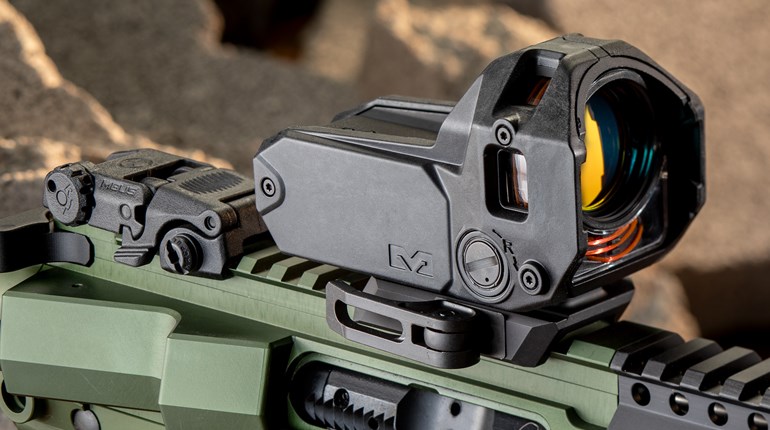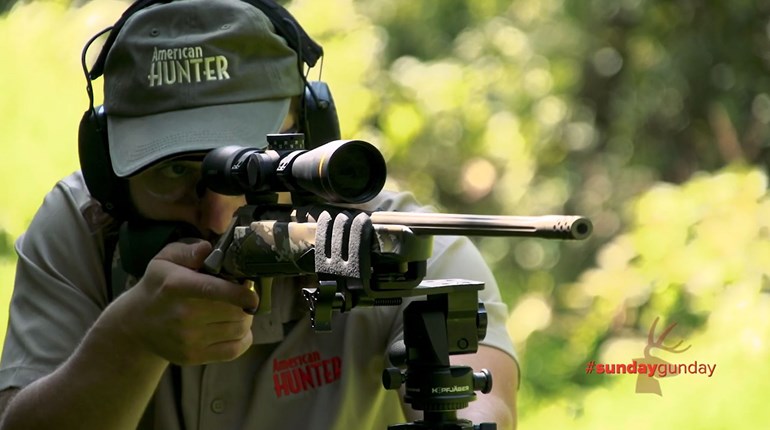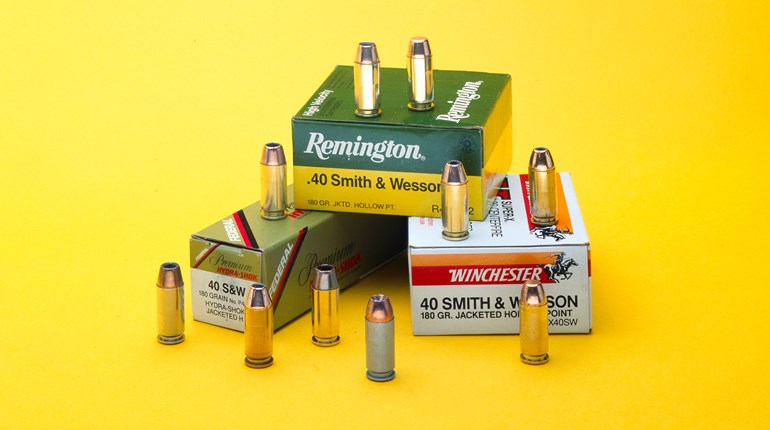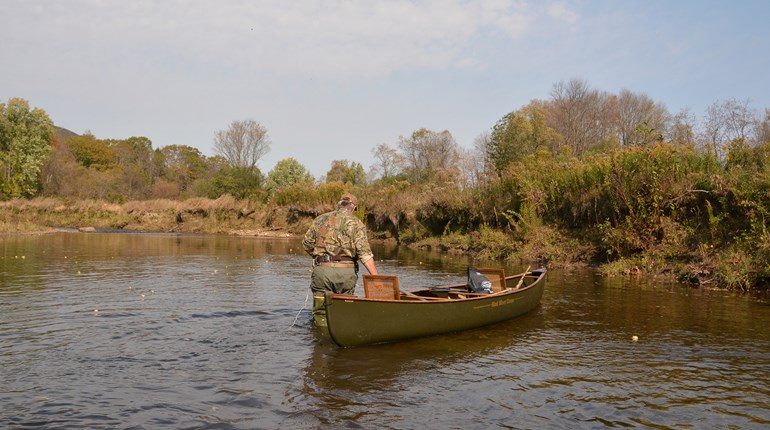
As predicted when the first laser-rangefinder binocular appeared, more have followed. Each generation gets better and better. Leupold’s RBX-3000 HD 10x42 is a perfect example.
Optical performance is what surprised me most about the $3,000 (street price) RBX-3000 HD. I compared it side-by-side with a first-generation version of one of the Big Three Euro rangefinder binoculars and clearly saw that this Leupold is optically superior in some important ways.

I determined this by glassing an Idaho mountain valley west-to-east while awaiting sunrise. Before it rose, I concluded the Euro binocular had sharper edges, but not by much. Only the last small rim of image in the Leupold went soft. Both instruments crisply revealed leaves, brush and a herd of distant cattle in the soft, blue dawn light. Ditto goldfinches and chickadees at 20 feet. Color balance seemed similar in both with no obvious bias. Then the sun broke the horizon and the Leupold took over.
Sun shining into an objective lens is the most severe test of a binocular’s ability to minimize flare and glare and enhance contrast. Initially the Leupold exhibited more glare than the Euro. This was seen as bright, orange highlights in various parts of the view. But when I began looking for details in the distant mountain’s shadows, the Leupold began to strut its stuff. Through the Euros the slopes were a uniform, grayish haze, almost as if fog lay over them. But the RBX-3000 sorted the hills from the haze quite nicely, revealing brushy ridges one behind the other plus small pine trees that weren’t even discernible through the high-dollar Euro instrument. I leave you to imagine which of these two tools would more clearly reveal a herd of elk or a mule deer under similar conditions.
I further tested optical performance by glassing a variety of landscapes and objects from 4 miles to 20 feet. Both binoculars seemed equally sharp; neither had a problem magnifying Canada geese in flight at more than 2,000 yards. If I can differentiate the gray edges of a goose from a gray sagebrush background in pre-sunrise lighting, I’m pretty satisfied. The Leupold, however, was the clear high-contrast winner. That’s important in a hunting binocular.
Extensive comparison glassing showed me no obvious advantage in the Euro optic. It might have been a hair sharper, but I think it's too close to call from a hunter’s perspective.
But optical quality is just one benchmark in a laser rangefinder binocular. Laser performance is the other. Here the RBX shines as well. When I hit the RBX-3000’s range button, a readout instantly appeared, and it was flashing some big numbers. Only after seeing 2,240 pop up did I remember the 3000 in the name stands for 3,000-yard ranging ability on highly reflective objects.
I’ve seen three of the world’s top-end laser rangefinder binoculars routinely reach 1,700 yards and quite often 1,800 yards, but this Leupold nearly doubles that. Whether a hunter needs this is debatable, but anyone playing the long-range target game would love it. I easily ranged a few stacks of haybales at 2,440 and 2,456 yards, cattle in sagebrush at 968 yards, a sage-grass slope at 2,760, a rock at 9 yards. Readings appear instantly with the second press of the activation button. And you get more than just distance to target.
In keeping with Leupold’s stand-alone rangefinders, this one gives you many computer-controlled set-up options including BOW for archery, LOS for pure distance-to-target measurements regardless of slant angle, and TBR/W, Leupold’s True Ballistic Range, which uses the on-board inclinometer to measure the slant angle and the internal computer to do the math. You just aim for the TBR number it spits out.

The RBX-3000 can be set up to show mils or MOA corrections, slant degrees, TRIG function and 10-mph wind corrections. It can’t measure wind speed, but it does measure temperature, barometric pressure and humidity then factors those into its computations. This can be handy when shooting above 10,000 feet or at extreme range when pressure and humidity differences begin to change trajectories.
Leupold claims its TBR calculations are hunting-accurate to 800 yards for most cartridges, which raises the question: Why a 3,000-yard reach? Well, because the known distance can still be used with traditional you-do-the-math calculations for extreme-range target shooting. Combine the RBX-3000 with a good ballistic calculator, dialing turrets and/or multiple reticle lines and you’re ready for 1,000-yard steel.
As is the case with most complicated, computer-driven systems like the one in the RBX-3000, set-up and effective field use take some getting used to. Three external buttons are pressed to change settings and make adjustments. Beyond the activation button, they are anything but intuitive. But the operating instructions clear up things fairly quickly. Once set up, field use is pretty straightforward. You sight your target, press the activation button to turn on the unit, then press it again to get your reading. Hold it down and scan to get continuous readings from 7 yards to 3,000. Readout will show LOS or TBR distance on top (whichever you’ve selected) then your chosen trajectory correction (MOA or mils) beneath. About a second later this reading changes to your windage correction. With one push of a button, the unit runs through temperature, barometric pressure, humidity, angle and battery level.
The rangefinder merely illuminates the number of mils or MOA you must hold to compensate for a 10-mph wind, you are responsible for determining speed and direction. All of this plus your TBR readings will be calculated off your bullet’s velocity and trajectory, determined from a list of factory loads and aftermarket bullets with fixed muzzle velocities zeroed at 200 or 300 yards. You cannot set your specific MV, BC and zero. This is the fly in the ointment for serious extreme-range shooters. Not every factory load is going to shoot the same in every rifle. But for hunters, Leupold’s extensive list of ammo, bullets and MV should more than suffice for precise delivery at all responsible ranges.
The barrels of this optic are fairly large, but thumb grooves and a stippled finish aid grip nicely. Twist eyecups lock in three positions. Dual diopter rings are deeply knurled in flexible rubber and firm. The focus wheel turns smoothly and easily but stops precisely. As a stand-alone binocular this would be an impressive, if heavy, unit, but as a binocular rangefinder with a 3,000-yard reach, it’s doubly impressive.
Technical Specifications
• Type: roof-prism rangefinding binocular
• Magnification: 10x
• Objective Lens Diameter: 42mm
• Focusing Range: 11.4ʹ-infinity
• Max Range: 3,000 yds (reflective target)
• Eye Relief: 18.5mm
• Exit Pupil: 4.2mm
• Field of View @ 1,000 Yds: 331ʹ
• Coatings: fully multi-coated lenses w/Twilight Max HD Light Management System, Guard-ion water sheading coating; dielectric, phase-corrected prisms
• Construction: aluminum chassis w/laser rangefinder; rubber armor; HD glass; nitrogen filled; waterproof; fogproof
• Dimensions: length 6.5ʺ; width 5ʺ, weight 37 ozs.
• Accessories: Pro Gear bino harness, neck strap, lens pen, lens cloth, battery
• MSRP: $3,899.99; leupold.com



































